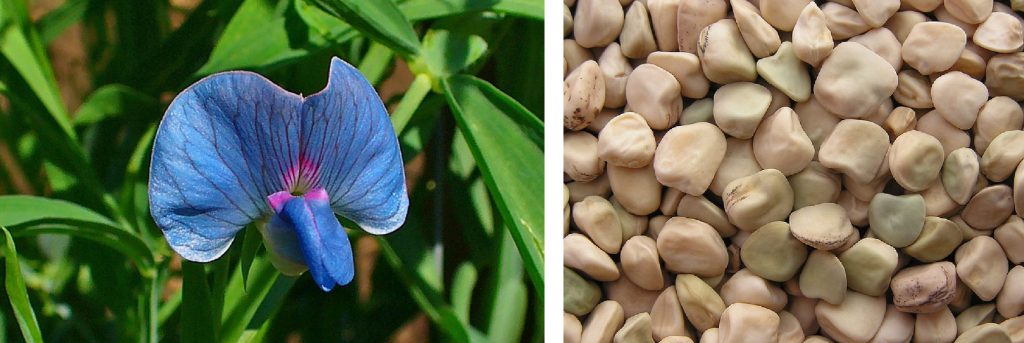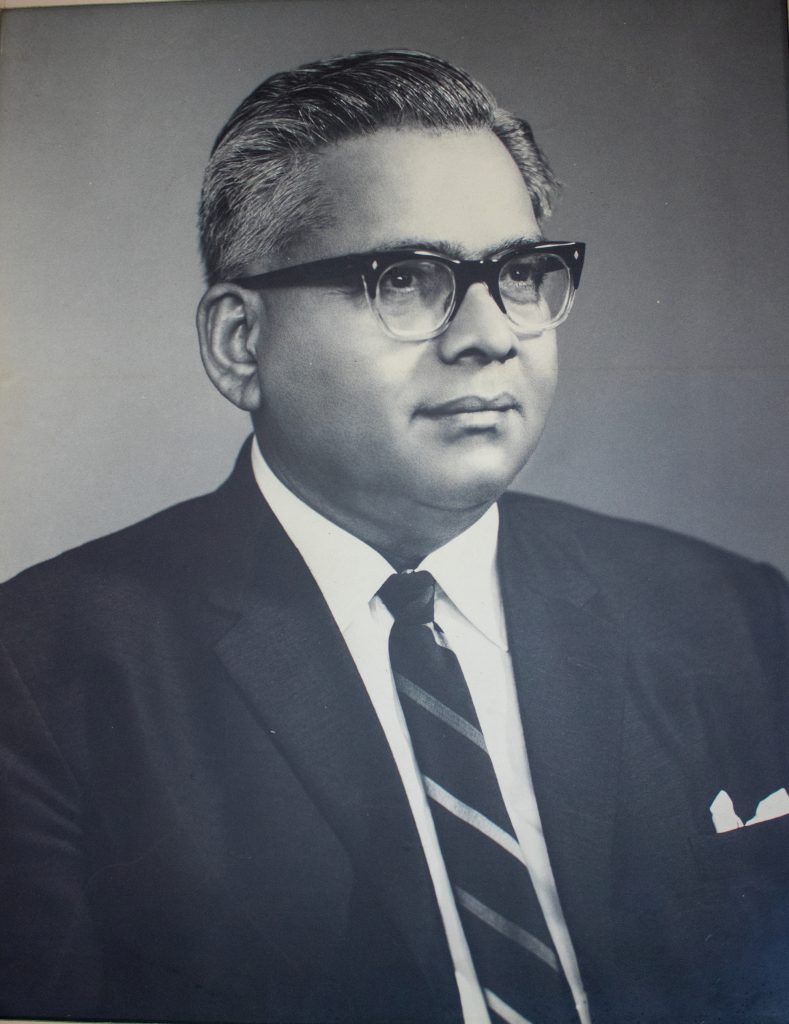Experiments in PS Sarma’s lab at the Department of Biochemistry in the 1960s explored a mystery disease caused by excess consumption of seeds of a controversial pulse crop

(Photos courtesy: H Zell/Andrew Butko/Wikimedia Commons)
For many years, the Department of Biochemistry at IISc worked extensively on nutrition. Its researchers have analysed the importance of vitamin B1 in our diet. They also recognised the nutritional benefits of “kanji”, a type of rice gruel, and carried out various experiments in which students of a Bangalore-based school were fed kanji as part of their mid-day meals.
An important contribution related to nutrition was research on a disease caused by excess consumption of kesari dal (Lathyrus sativus). Kesari dal is a pulse crop that was at one point cultivated extensively in parts of Central India. Its hardy nature helps it survive the adverse conditions of drought, and it was more frequently consumed by people who were economically disadvantaged during these conditions. This crop is also rich in vitamin B1 and iron, and contains more protein than any other seed crop, making any food cooked with kesari dal a complete meal in itself.
However, this presumed life-saver had a downside too: excessive consumption of kesari dal seeds caused neurolathyrism, an upper motor neuron disorder characterised by muscular weakness, spasms, and paralysis of the lower limbs. Most of the people who experienced these symptoms were poor labourers who were given this dal as payment instead of their daily wages. In 1961, around 32,000 people were affected by this disease in Madhya Pradesh alone. This led to its ban in most Indian states. Cultivation of this crop was severely penalised by the government. But in June 1975, a severe drought brought this disease back when 1,00,000 men between the ages of 15 and 45 were affected in Madhya Pradesh and Bihar.
Around the same time, other scientists had already linked osteolathyrism, a form of lathyrism, with the excess consumption of seeds of a related plant: the sweet pea (Lathyrus odoratus). The culprit was identified as a toxic molecule in the seeds called β-amino propionitrile. PS Sarma, a nutritionist and faculty member at the Department of Biochemistry, was keen on identifying similar toxic molecules that could be responsible for the neurolathyrism linked to kesari dal.
The biggest challenge for Sarma’s team was to find an ideal experimental organism to test the effects of kesari dal. The most commonly used model animals like rats and mice were not affected adversely by the dal. But then, in those days, insects were also used as experimental organisms for nutritional research. Therefore, Sarma and his team decided to use Corcyra cephalonica, an insect that feeds on rice and wheat flour.

They first crushed the kesari seeds in different solvents to extract specific compounds. Each extract was tested on the insect larvae to identify which of them disrupted their neurophysiology. Among the extracts, the alcohol extract was the one found to inhibit the growth of the insect larvae.
Around the same time, in 1963, a research group at the National Institute of Nutrition, Hyderabad, published a study showing that the alcohol extract of kesari dal seeds was neurotoxic in day-old chicks. This exciting news led to a flurry of experiments by Sarma and his team. The alcohol extract was further analysed and was found to contain a highly acidic amino acid, β-N-oxalyl-L-α, β-diaminopropionic acid (ODAP), which was indeed a neurotoxin. It was neurotoxic not just for chicks but also rats. Sarma, along with Dr KS Mani from NIMHANS, Bangalore, showed that ODAP causes paralysis of legs in monkeys when injected via the spinal cord. Surprisingly, oral feeding of ODAP or the dal itself did not produce the symptoms, suggesting a link to the blood-brain barrier, which regulates the flow of molecules from the blood to the brain.
Now that the causative compound was identified, Sarma wanted to develop ways to eliminate the toxin from the dal to make it safe for consumption. He observed that steeping seeds in hot water for an hour resulted in more than 90% of the toxin leaching into the water. The residual seeds could be sun-dried and ground into flour to make chapatis. Another method was to parboil the seeds, which removed most of the toxin. He and his team were also able to prepare a lysine-rich protein supplement from these seeds because they are a rich source of this amino acid, unlike other pulse crops. He also wanted to use it as baby food since it was rich in nutrients.
Unfortunately, with the untimely demise of Sarma in the year
1970, this promising endeavour was left unfinished.
Even today, neurolathyrism remains a disease without a cure. Many research groups have worked on ODAP because of its neurotoxic properties. Sadly, no one has been successful in reproducing the symptoms of neurolathyrism seen in the people of Central India. The infamous kesari dal still remains an enigma.
Sangeetha Devi Kumar is an Integrated PhD student in the Department of Biochemistry, IISc




